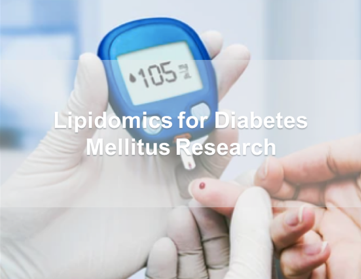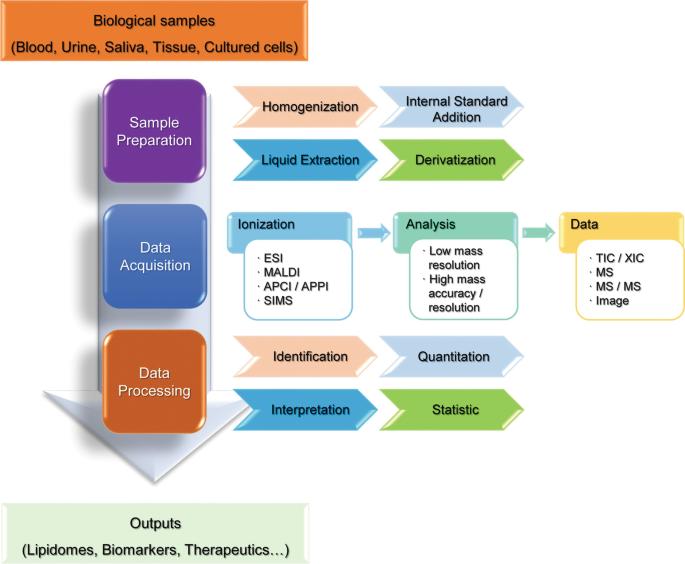Lipidomics for Diabetes Mellitus Research

Diabetes is a complex group of metabolic diseases due to a combination of genes and external environment, and diabetes and its later complications also pose a great threat to the quality of life of patients. The prevalence of type 2 diabetes has increased dramatically as the standard of living has improved dramatically. Early detection and prevention also play an important role in the development and progression of diabetes mellitus.
Lipids play an important role in both the causes and consequences of diabetes mellitus (DM). Some plasma lipids, such as TAGs, cholesterol and non-esterified FAs, are considered to be traditional clinical indicators of DM. However, they are of limited value in identifying individual subjects at risk and are not helpful in distinguishing which subjects will develop diabetes.
High-throughput lipidomics offers a powerful approach to unraveling the complex relationship between lipid metabolism and the development of DM, and has investigated impaired lipoprotein metabolism as well as novel lipid biomarkers for early diagnosis and risk assessment. Studies have shown that sphingolipids within ceramide, sphingomyelin, lactose ceramide (LacCer) and ganglioside GM3 (GM3) are significantly elevated in mild T2DM. Sphingolipids may serve as potential biomarkers of T1D and represent new therapeutic targets.
Creative Proteomics provides customized lipidomics solutions to help our clients generate new insights into diabetes pathophysiology and accelerate the drug development process.
Featured services
Technology Platform for Lipidomics Service
Creative Proteomics designs experimental protocols based on customer needs and selects different technical methods to improve assay efficiency and ensure the accuracy and reproducibility of results.
Based on LC-MS/MS technology to simultaneously analyze hundreds of different lipids in biological samples to obtain more information. Through bioinformatics data analysis, we can systematically elucidate the variation at the lipidome level and the regulatory mechanisms in the experimental group compared to the control group from a lipid perspective.
Targeting specific lipid molecules and their metabolites in samples. Based on high-resolution mass spectrometry and isotope internal standard, we use parallel reaction monitoring (PRM) targeted analysis technology, which can realize the specific acquisition of signals of multiple lipid molecules (such as dozens of target lipid molecules) at the same time, and obtain their absolute contents to meet the needs of targeted detection and verification of target lipids. Using Orbitrap mass analyzer and ultra-high resolution mass spectrometry, high quality data can be obtained. Sensitivity up to ppm level and linearity range up to 5-6 orders of magnitude.
 Lipidomics Analysis Process (Wang et al., 2021)
Lipidomics Analysis Process (Wang et al., 2021)
Advantages of Lipidomics Services
- Experienced in sample pre-processing and can handle a wide range of tissue cell samples
- Multi-isotope internal standard calibration, including QC and other multiple quality control systems to make the quantitative more accurate
- Suitable for complex matrices, more metabolite and metabolic network information can be obtained in a single test
- Professional data analysis, able to perform PCA, OPLS-DA, T-test and other analysis on the data
How we work in 7 easy steps

If you would like to learn more about our lipidomics solutions for diabetes, please contact us. We look forward to collaborating with you.
Reference:
- Wang, Y. (2021). Applications of Lipidomics in Tumor Diagnosis and Therapy. In Lipid Metabolism in Tumor Immunity (pp. 25-39). Springer, Singapore.
* Our services can only be used for research purposes and Not for clinical use.



 Lipidomics Analysis Process (Wang et al., 2021)
Lipidomics Analysis Process (Wang et al., 2021)
